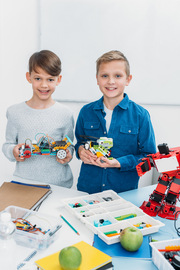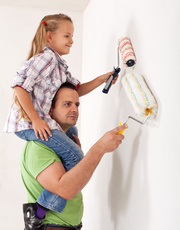When Your Child Wants To Start a YouTube Channel: Is It Safe?
If you’re ever approached by your child and they have dreams of entertaining the world online by starting their own YouTube channel, you must do your research. While there are some perks to becoming an influencer, caution is always necessary. Let’s look at how your kid can become a YouTuber without compromising on safety.
Consider the Benefits of YouTube
Some parents can too easily shout out a resounding “no” when their kids say they want to start a YouTube channel. Usually, it’s because they think YouTubing is not worth the time or that there are better passions to pursue. However, YouTube is growing by leaps and bounds with billions of users around the world. Countless content creators are making a good living just by posting their opinions and content a few times per week.
In fact, there are many ways that kids and adults alike can make money on YouTube, including by getting enough views and subscriptions so you can join their partner program. Once a member, creators make money by running ads during the videos. The more viewers, the more money. There’s also the possibility of making money by selling products and merchandise, asking fans for donations, and adding affiliate links in the description of the videos.
Keep in mind that if your child is under 18, they are not eligible to join the YouTube partnership program themselves. Instead, you will need to sign the contract as a parent or guardian.
Even if they don’t become famous, your kids can learn many skills when working as a YouTuber, including video production, public speaking, sound editing, and more. Tech skills like these will continue to be relevant as time passes. So if your kiddo can dip their toe in the pond and learn a few things, then they could have a great career even outside of YouTube.
So, inquire further and take the time to ask your kids what they want to do on YouTube. Ask about the type of content they are thinking of producing. If it seems age-appropriate and they agree that you can monitor their channel along the way, then consider letting them try.
Learn about how to make a clear presentation: (Explainer Video)
Monitor Their Work
If you have younger children, especially those under 13, then it’s essential that you’re there with them every time they upload and open up their videos to comments. The general rule is that it’s not illegal for a child under 13 to create a YouTube channel. Still, the parents must be aware of the account and cognizant that data can be collected from that account.
Even so, it’s wise for you to be there when they get set up so you can help them to choose an appropriate username. Although your child may make age-appropriate videos, they can still see other content if they are not using Restricted Mode on YouTube. Be sure to turn this mode on and turn off AutoPlay to ensure your child does not view inappropriate content.
Once your children start posting online, continue to monitor the videos that they make and create a strict rule where they cannot upload until you have reviewed it and provided the OK. From this point, it’s essential that you monitor their activity, especially when it comes to the comments section.
While your children may get some positive feedback, people can be mean in the comments section, and many will take any chance they get to tell your child that they don’t like the video. Although some constructive criticism is okay from time to time, constant negativity can impact your child’s mental health and force them to quit YouTube or cause other issues down the line. When the comments get too out of control, disable them.
Staying Safe Along The Way
If you take the time to monitor your child’s activity and keep negativity contained, then becoming a YouTuber is generally a safe endeavor. However, just like with any online activity, there can be threats and risks. For instance, it’s important to set boundaries about if, when, and where it is appropriate for your child to livestream videos.
When your kids start having a more significant presence online, they’ll also be subjected to more cybercrime, including phishing scams. You should expect occasional emails from hackers pretending to be YouTube administrators who try to trick you by saying how your account has been suspended and that you must click a link to clear up the situation. However, when you click, you open a doorway to the hacker into your system, and from there, they can cause havoc in your larger home network.
To prevent this and other scams, try some anti-phishing best practices, starting with educating your kids on how to spot these scams. In addition to spelling mistakes and unexpected messages, you need to check the domain the emails are coming from If the message doesn’t come from YouTube or Google, avoid further action. Adding extra protection onto your child’s device just in case a hacker tries to gain access, like two-factor authentication or robust antivirus software.
It can be daunting when your kids first approach you and ask to start a YouTube channel but remember not to be too fast to shut them down. Ask questions, encourage them when necessary, take steps to keep them safe, and they can be successful.
About the Author
 Katie Brenneman is a passionate writer specializing in education, mental health, family lifestyle and online safety. When she isn’t writing, you can find her with her nose buried in a book or hiking with her dog, Charlie. You can follow her on Twitter.
Katie Brenneman is a passionate writer specializing in education, mental health, family lifestyle and online safety. When she isn’t writing, you can find her with her nose buried in a book or hiking with her dog, Charlie. You can follow her on Twitter.








 Explore the Safe Search Engine -
Explore the Safe Search Engine -